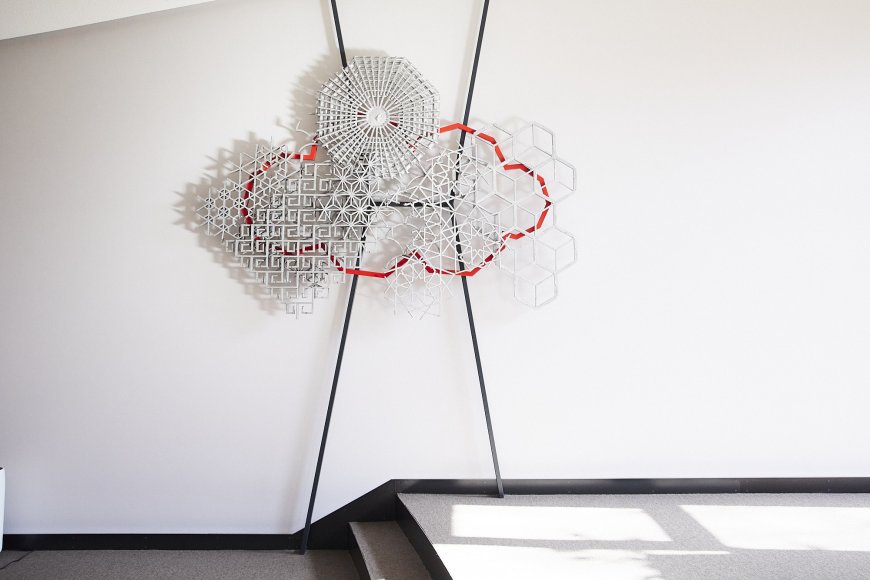
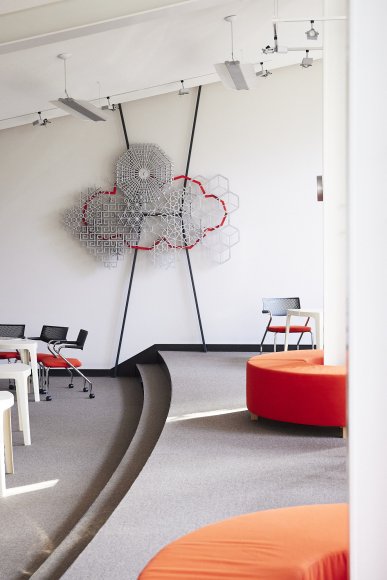
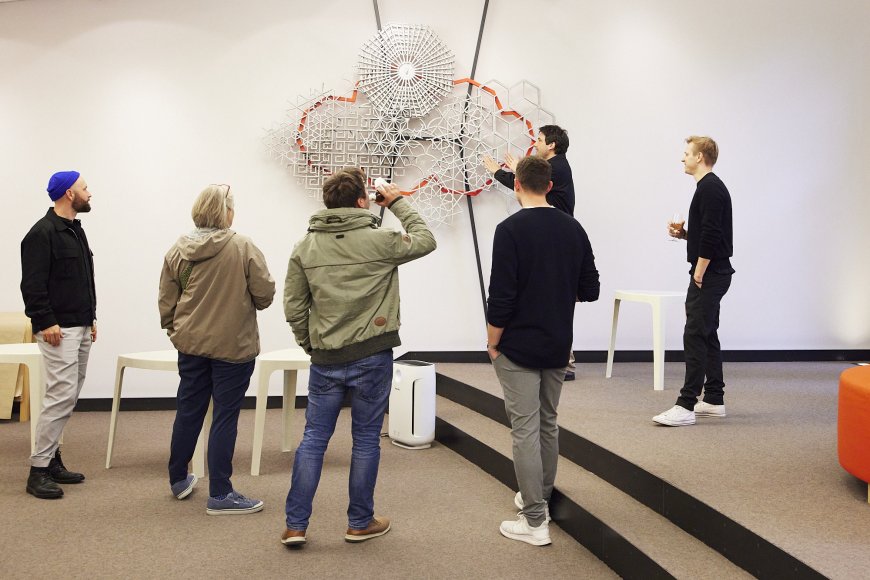
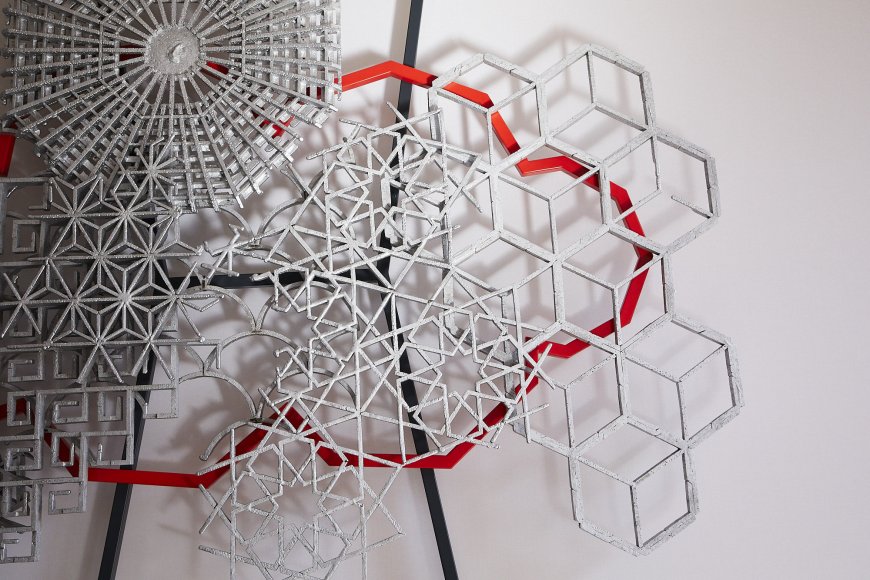
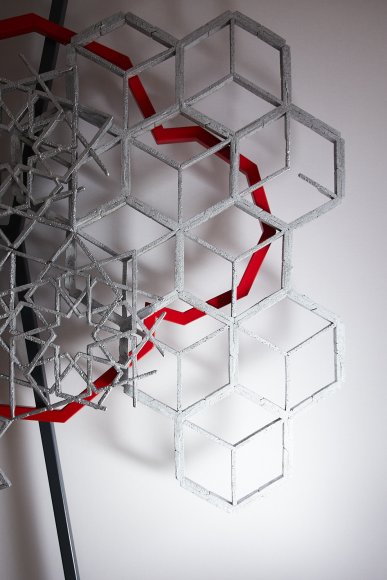
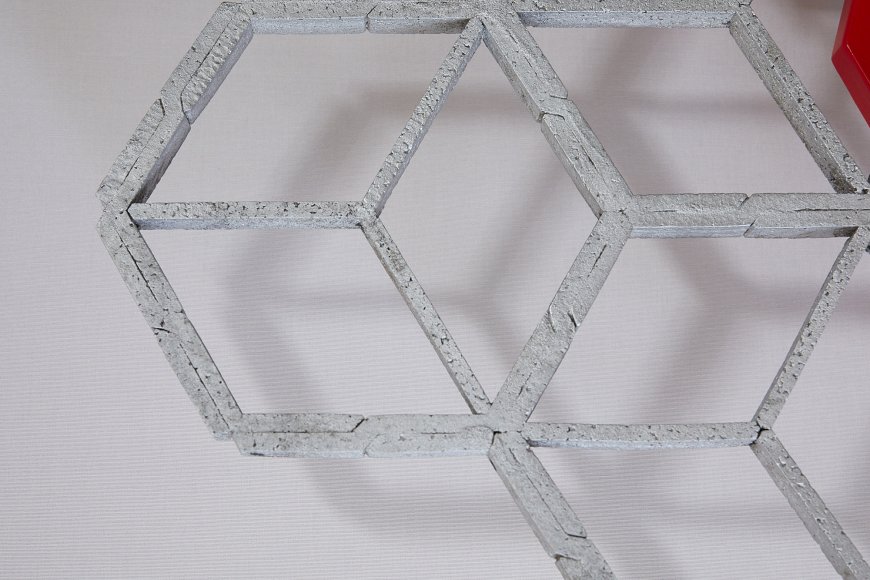
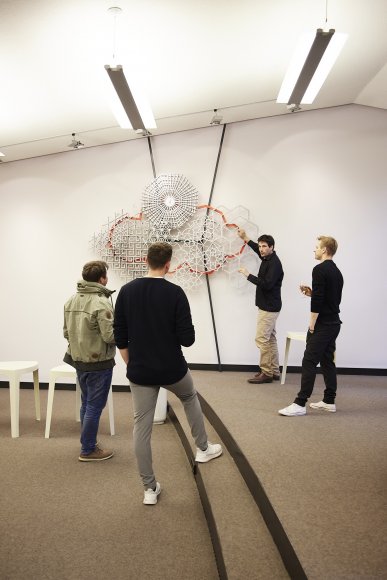
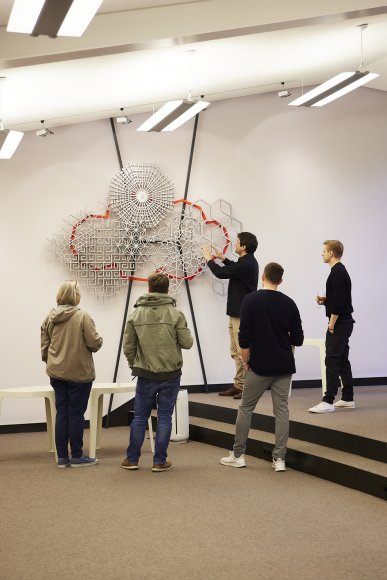
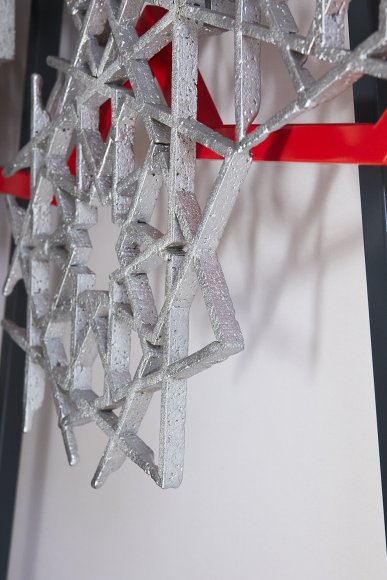
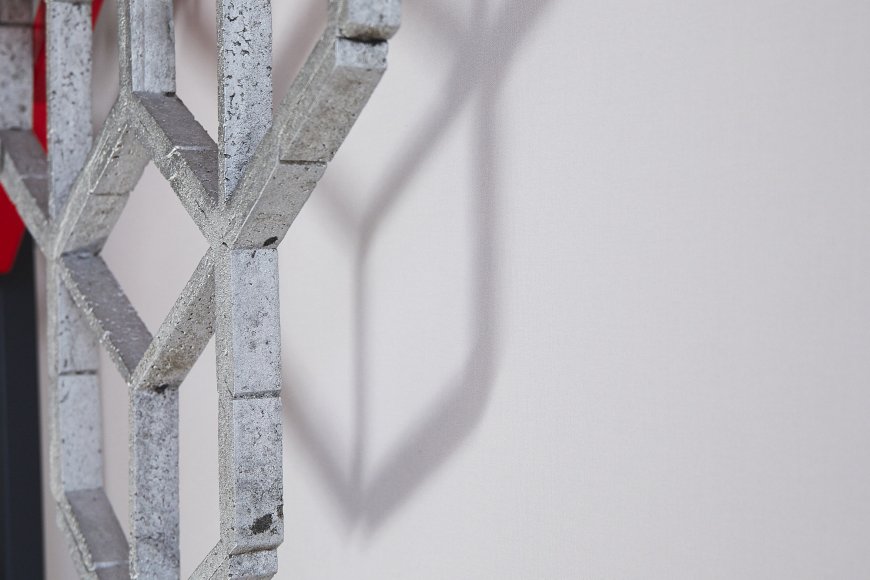
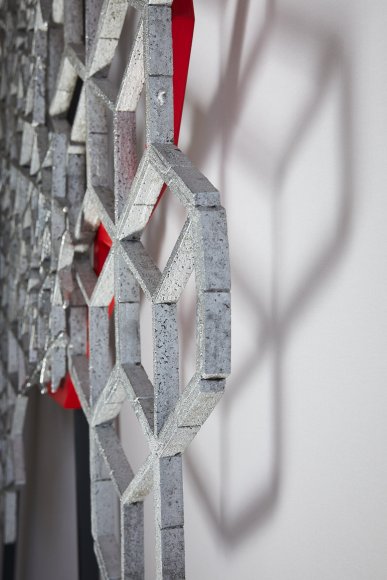
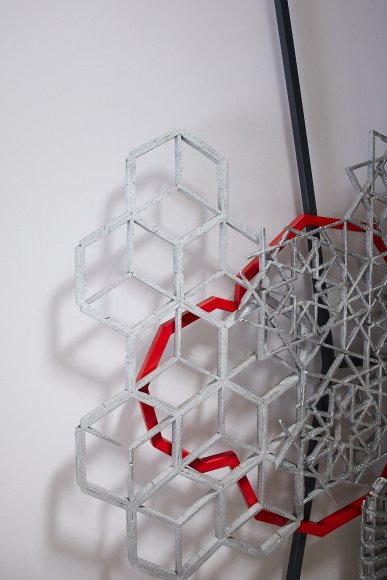
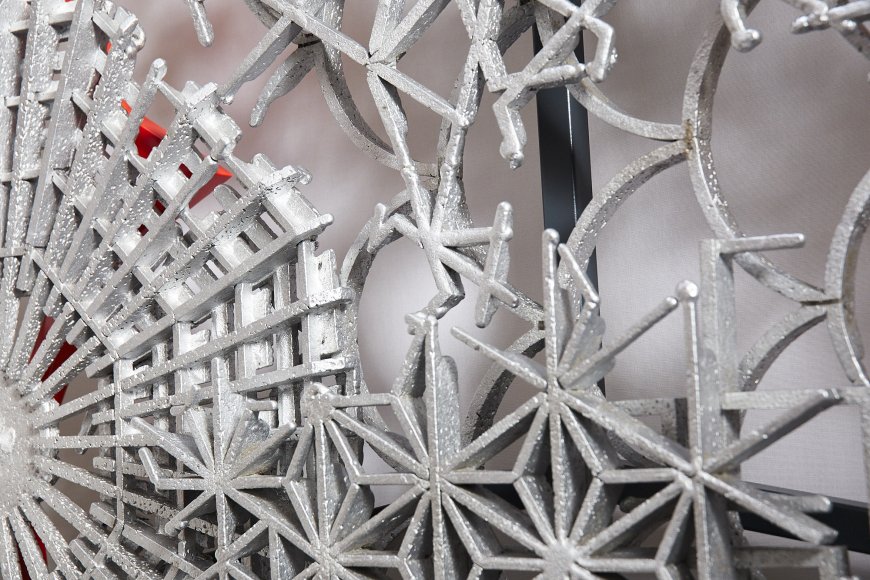
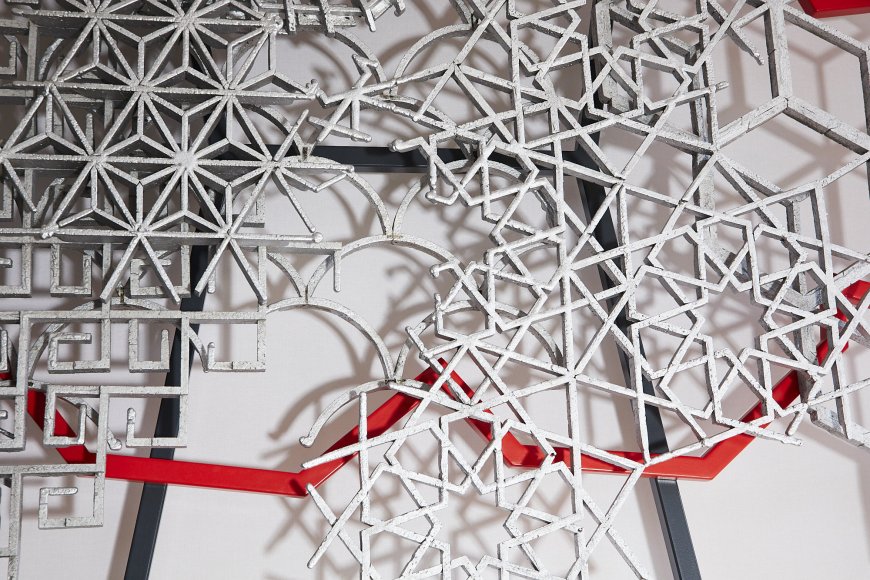
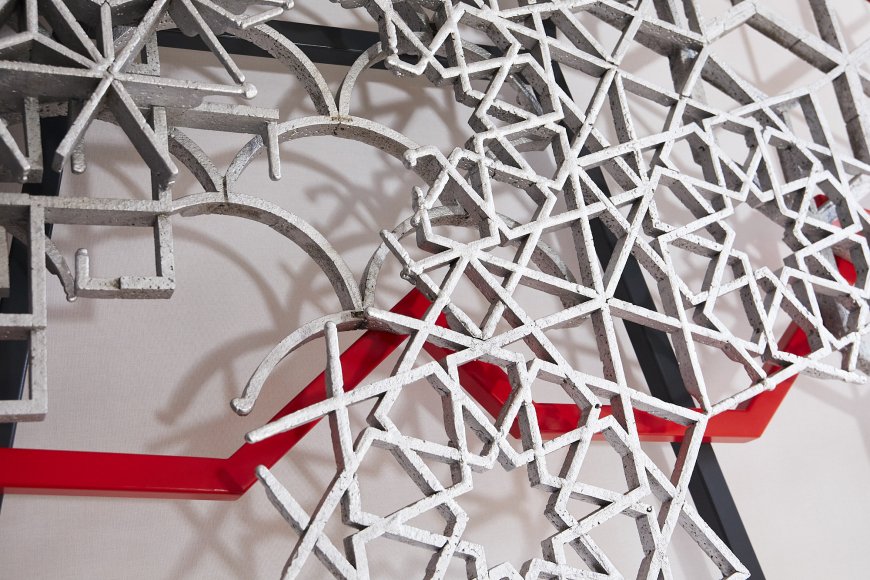
Our workshop spaces are not exhibition spaces. In this respect, art has a special function here – it must be noticeable. It may take up space, but it also has to be able to withstand cohabiting with numerous boards full of posters and cards with questions on the design of organizations. Starting from this desire for a peaceful co-existence between art and workshop materials, the Berlin artists Janine Eggert and Philipp Ricklefs developed an idea that goes far beyond the coexistence of art and workplace. They describe a movement
in our Metaplan thinking better than words can, making complexity visible and challenging the way we deal with it. Geometric patterns and elements, of which the cloud is only one among many, are perceived as a confrontation with our own visual habits and expectations. And that, after all, is what art can do: create a level of interaction in which the confrontation with art challenges us as beholders.















For me, quoting the Metaplan cloud is an expression of Metaplan’s structural turn, in which interaction still shines through as the defining factor.
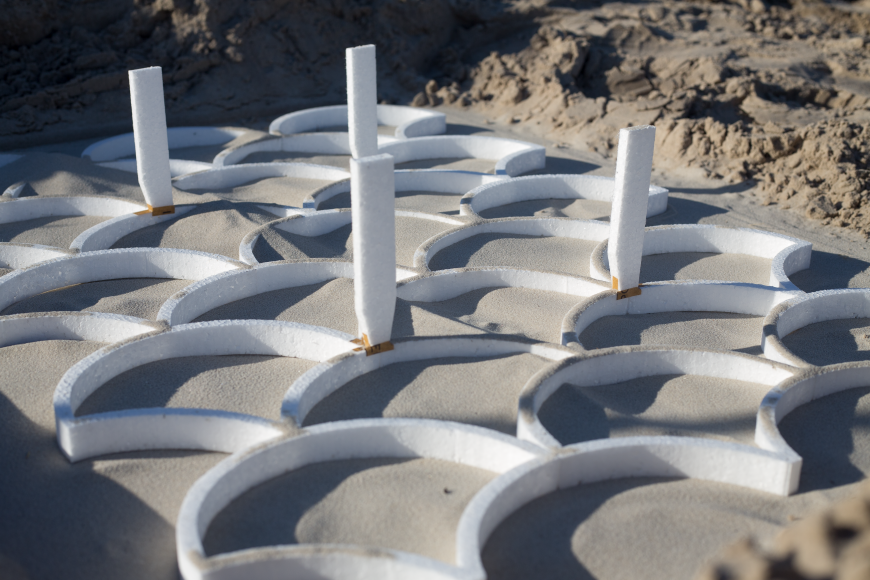
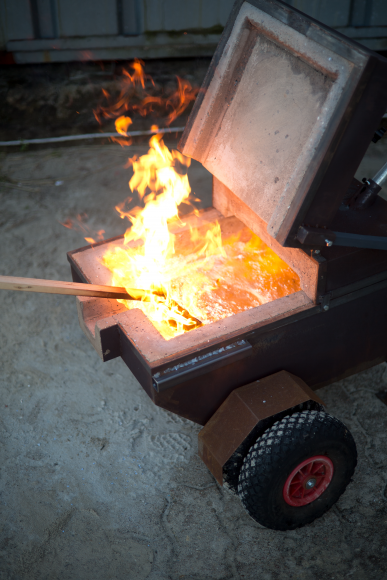
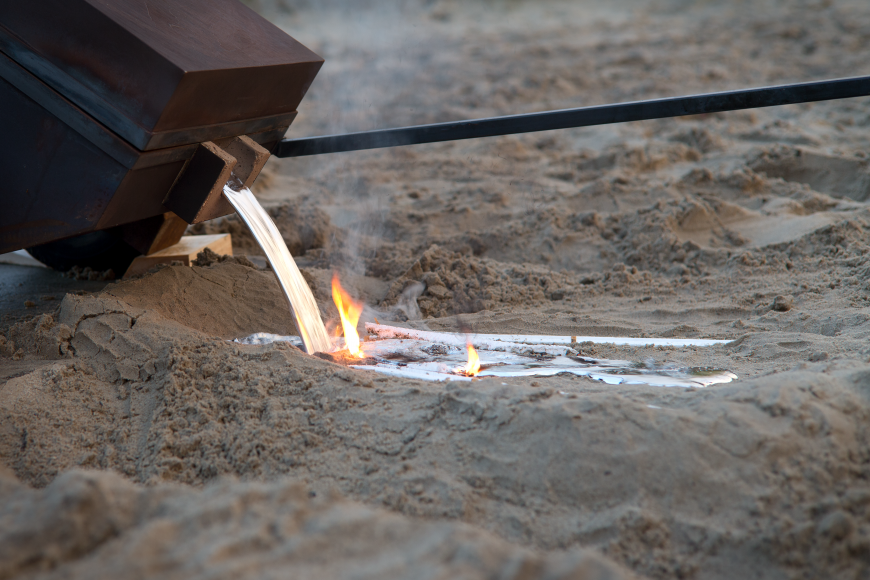
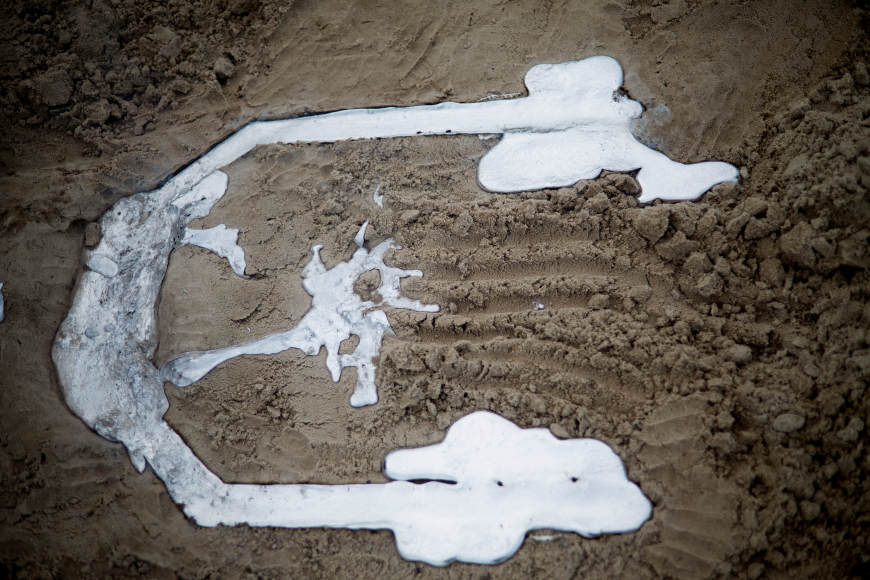
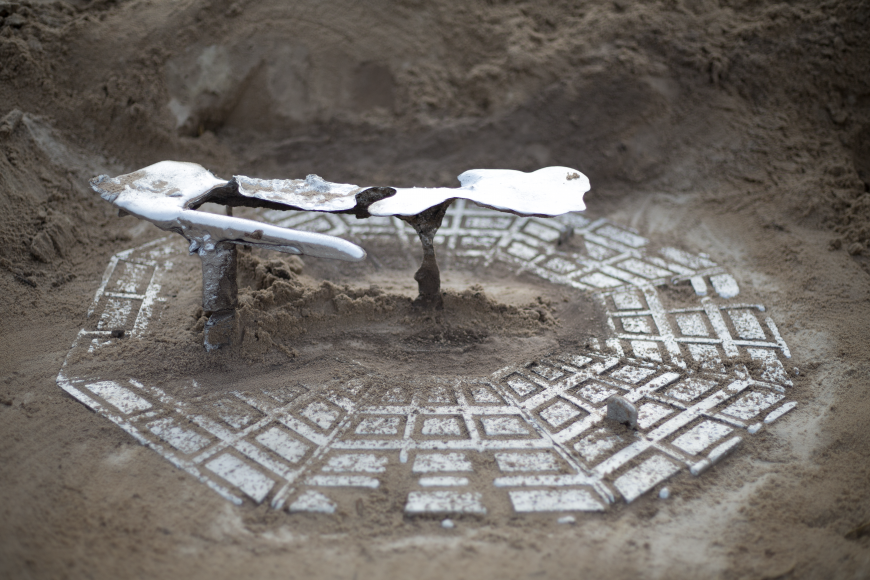
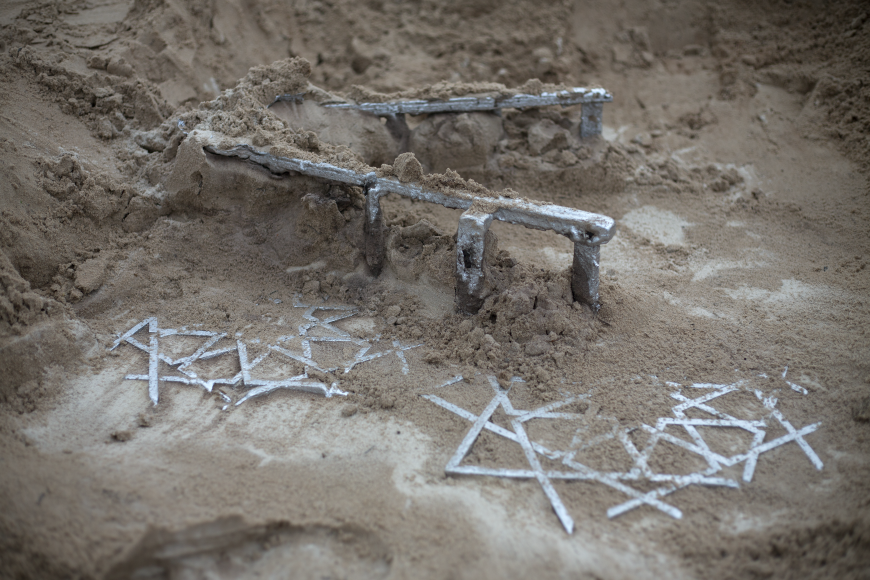
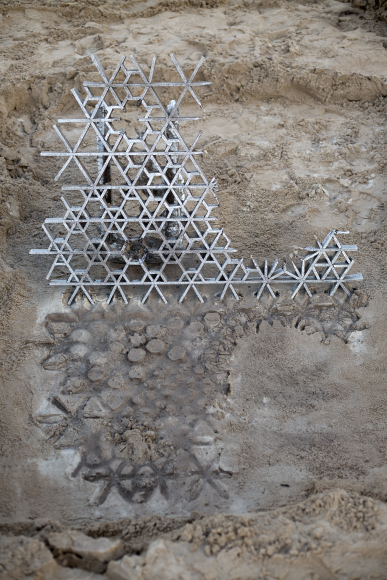
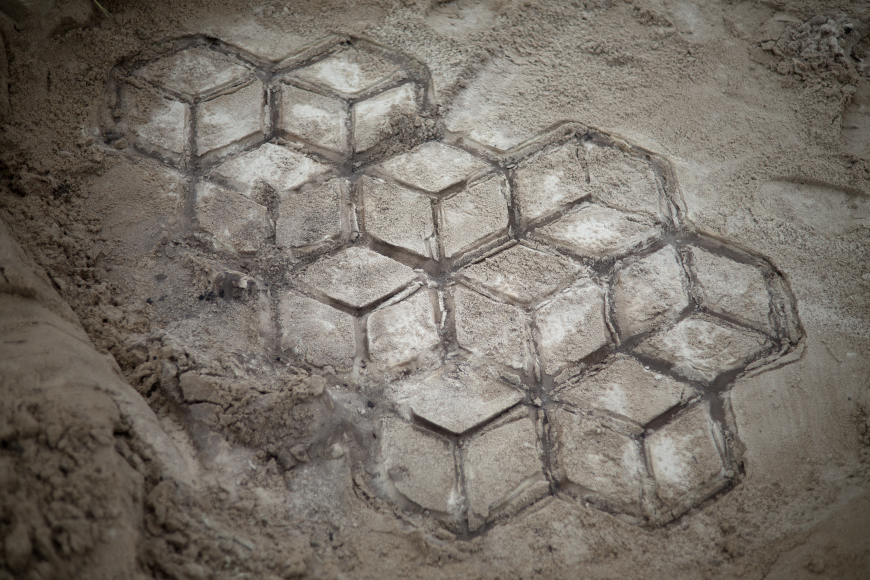
Forms are lost and structures gained – how art can make interaction visible. Interaction is the keyword that circumscribes the manufacturing process of this sculpture. The sculptures were cast in aluminum using the process of lost mold casting. The geometric templates were hand-carved from Styrofoam, then buried deep in the North Sea sand of the island of Amrum. Using a conduit, aluminum heated to over 900°C was poured into the sand.
The heat causes the Styrofoam to deflagrate and succumb to the aluminum – in theory. In practice, it turned out that especially where the sand was impure and contained other fusible material such as algae residues or trash finely ground by the waves, more than the mold deflagrated and the underground structure imploded. The outcome was that in some places the patterns broke off, while in other places new ones emerged. Perfectly imperfect in fact.
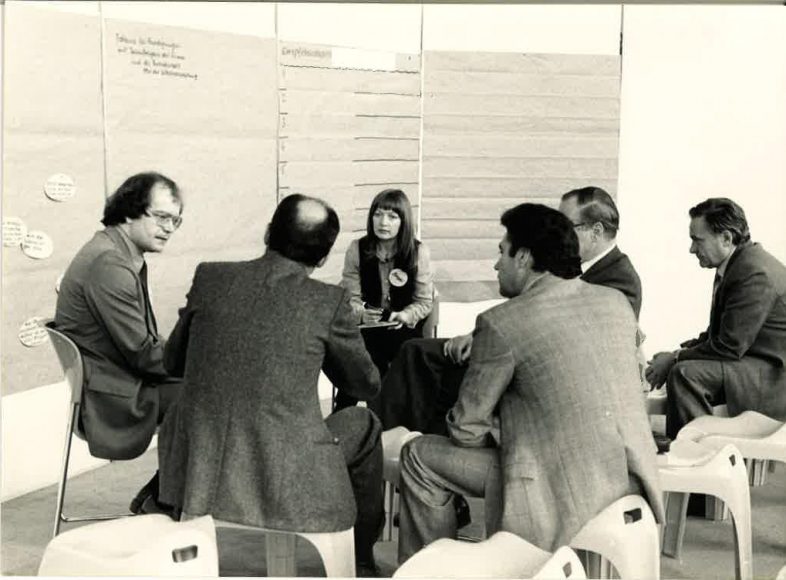
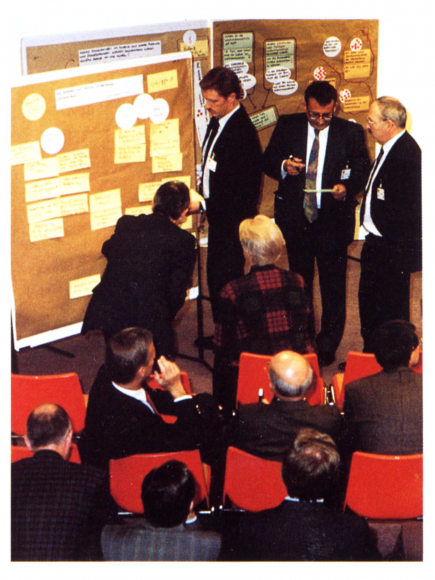
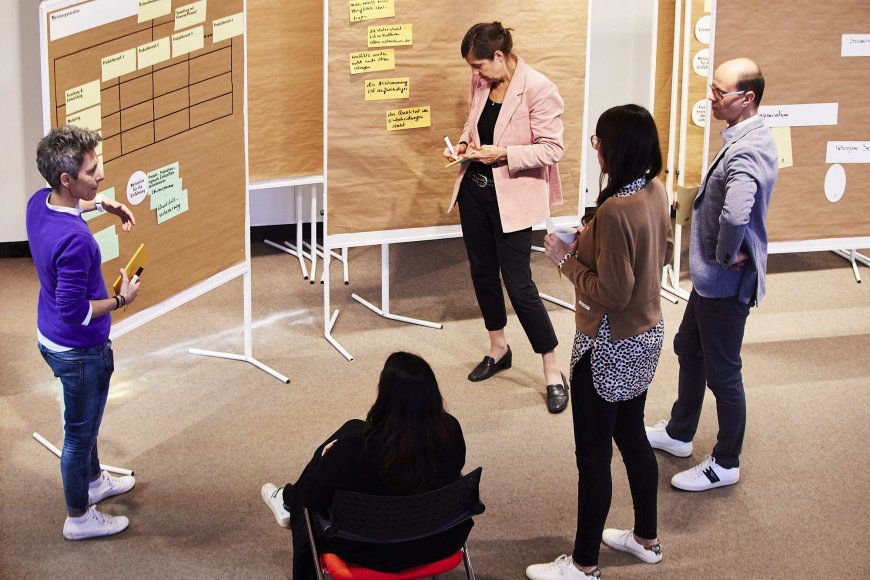
A description of what constitutes Metaplan from a merely internal perspective would be incomplete. That’s why we put together a variety of artistic positions that describe in different ways what constitutes Metaplan.
We’re looking back to ask ourselves what is to come. Welcome to the world of metamorphoses.
Transformation gets organizations moving – why a change of perspective can be worthwhile.
“We call our work planning” – questioning the present in organizations.
Between information markets and corridor gossip – experiencing the history of Metaplan in an unusual sound space.
Change through attitudes, attitudes in change: how Metaplan ticks – past and present.
As a metaplanner striving for unambiguity in her statements, Tesle Schnelle Cölln’s art balances on the threshold between figuration and abstraction.
Visualization is the interaction of individual elements for an overall impression – in art and moderation.
From op-art to visual rhetoric – the art of moderation lies in the interweaving of individual elements.
Here, abstract geometric shapes are the basic elements of a visual language, through which communication develops into understanding.